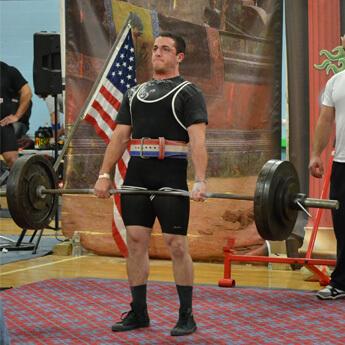Calories Burned Walking: How Many Calories Burned Walking
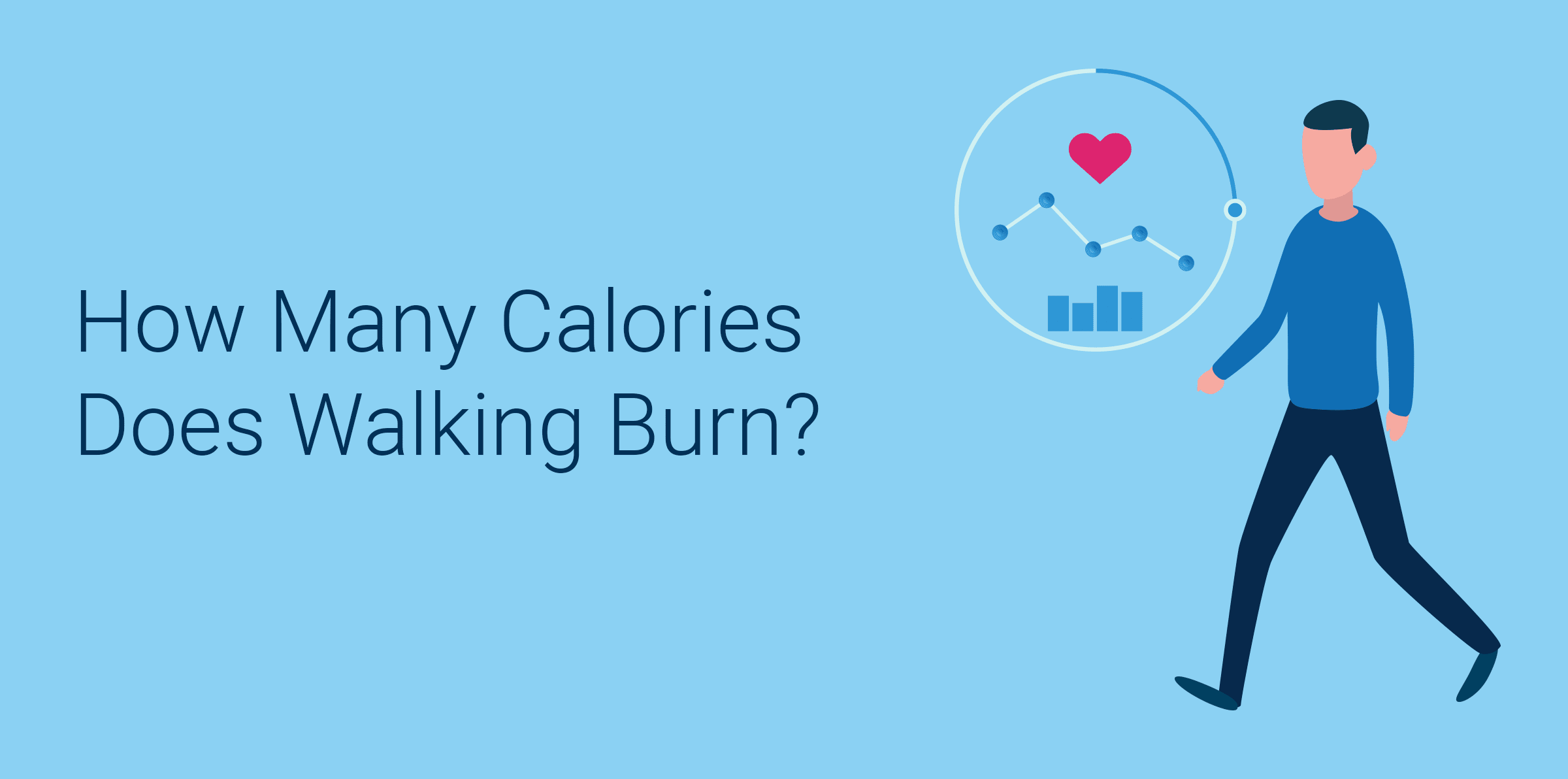
In order to stay active and enjoy the benefits of exercise, people began getting active outdoors during the pandemic. In fact, activities like walking was the top fitness trend in 2021, so we wanted to analyse just how much walking benefits weight loss and how many calories will walking burn.
In this piece, we discuss:
- Calories burned walking per hour
- Calories burned walking per minute
- Calories burned walking by miles
- Walking duration to burn 500, 1,000, 2,000 calories
- Calories burned walking uphill vs flat surface vs downstairs
- Calories burned walking per step
- Calories burned by type of walking
- Calories burned walking by weight
Note: For consistency, this analysis used data from a person weighing 155 lbs and walking at an average speed of 2.5 mph (16 minutes / mile). For comparison, see our analysis of calories burned running and calories burned cycling.
Calories burned walking per hour
A person weighing 155 lbs burns an average of 211 calories per hour when walking at a speed of 2.5 mph.
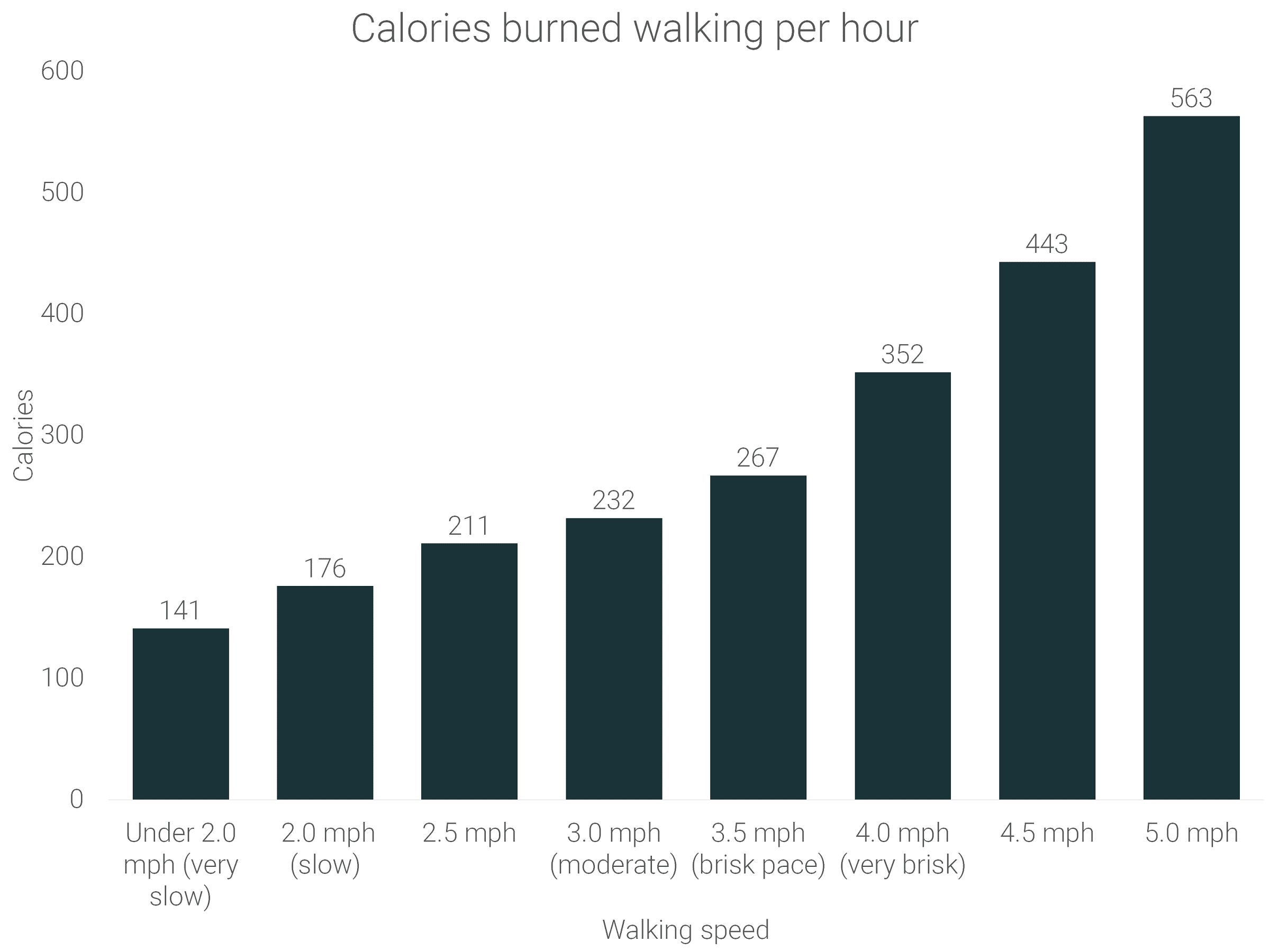
You burn 166.8% more calories walking 5.0 mph for one hour in comparison to 2.5 mph.
Calories burned walking per minute
Walking at 2.5 mph, you burn 3.52 calories for each minute you walk while walking for 30 minutes at the same pace burns 105.5 calories.
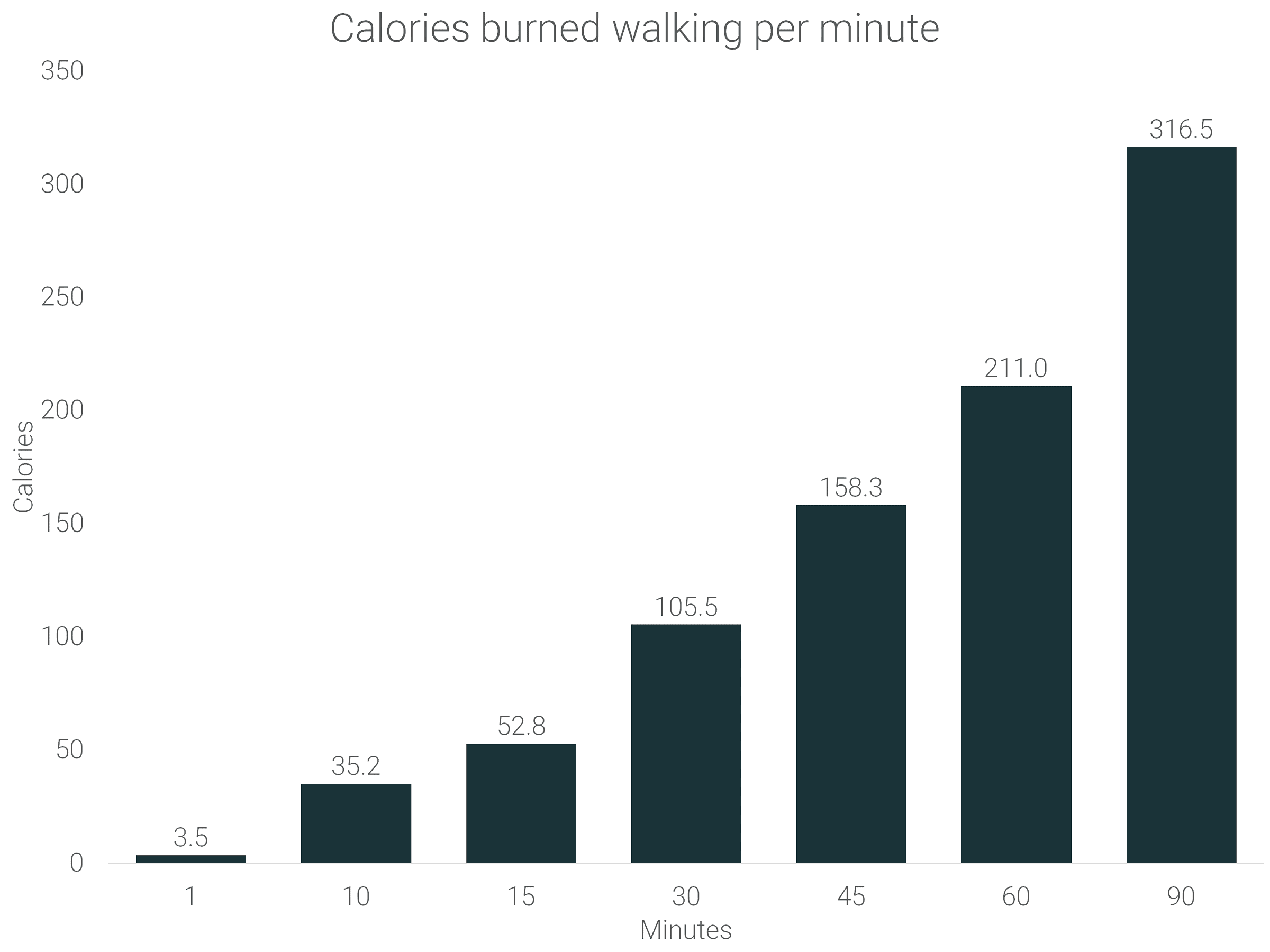
It would take you approximately 284.4 minutes to burn 1,000 calories.
Calories burned walking by miles
To burn 500 calories, a person weighing 155 lbs needs to walk 5.9 miles going at a speed of 2.5 mph. In order to burn 2,000 calories, you will need to increase your walking distance by 301.7%, for a total of 23.7 miles.
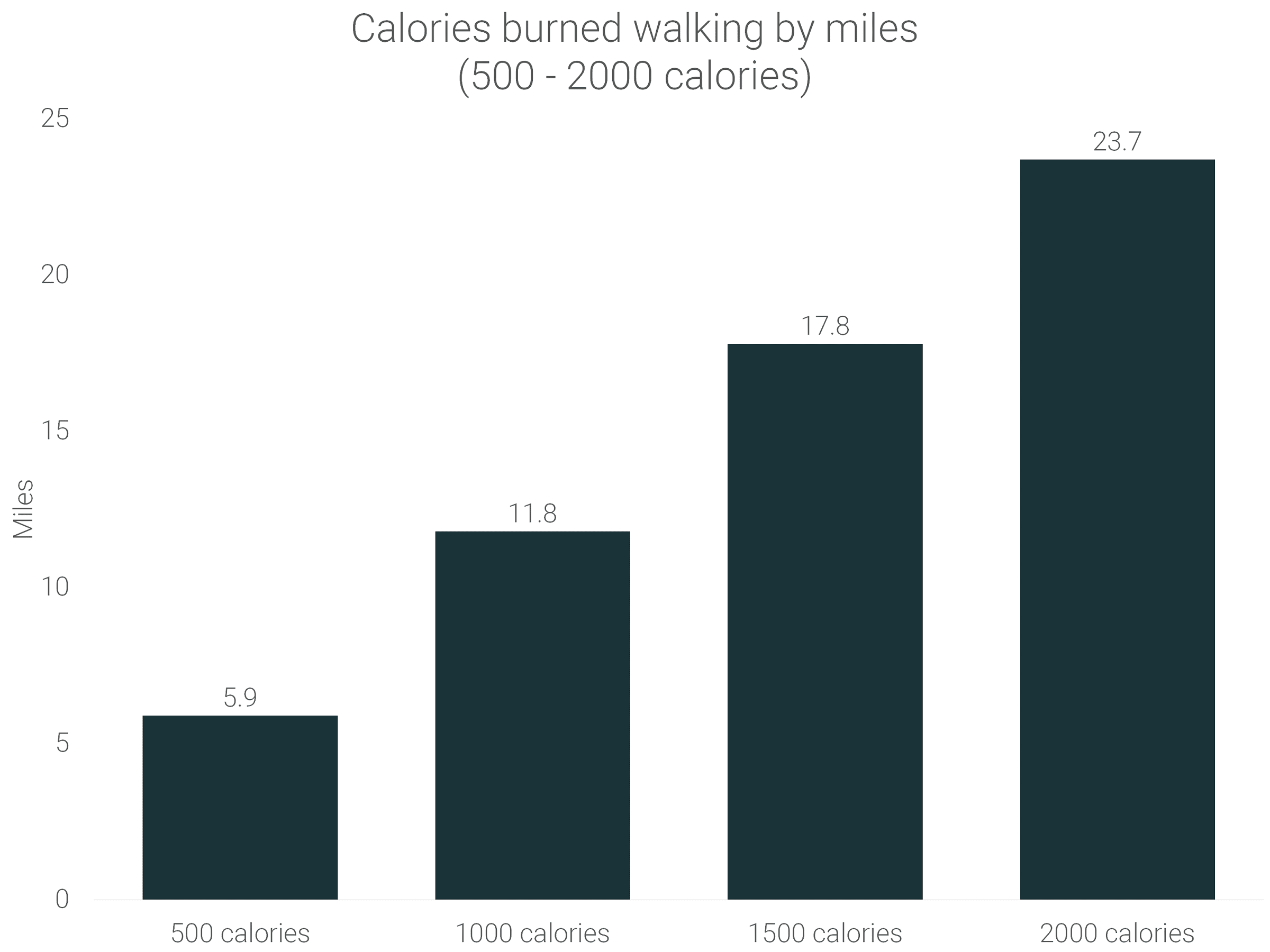
Burning 1,500 calories requires walking 17.8 miles which is 50.8% further compared to the distance needed to burn 1,000 calories.
Number of hours of walking to burn 2,000 calories
To burn 2,000 calories, a person weighing 155 lbs needs to walk 9.5 hours going at a consistent speed of 2.5 mph. This is 26.7% longer in comparison to a brisk walking pace of 3.5 mph.
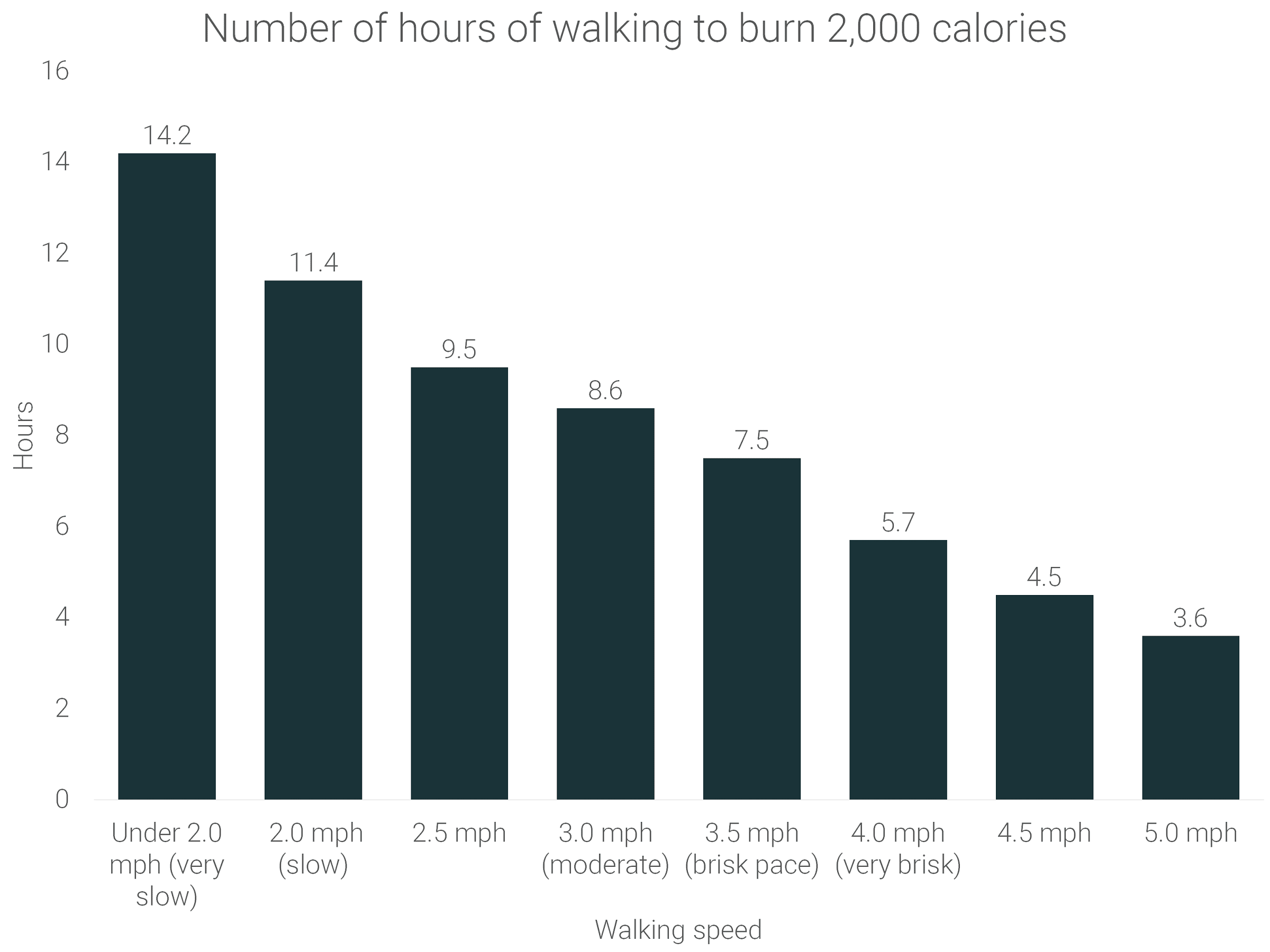
Walking at 5 mph takes the shortest time to burn 2,000 calories at only 3.6 hours.
Calories burned walking uphill vs flat surface vs downstairs
Walking uphill burns 58.05% more calories than walking on a flat surface at the same speed over the course of an hour. However, it takes 59.6% longer to burn 2,000 calories walking at a brisk pace of 3.5 mph on a flat surface compared to going uphill at the same speed.

Walking with lower resistance by going down stairs burns 20.97% fewer calories than walking on a flat surface.
Calories burned walking 10,000 steps
Every step you take burns approximately .04 calories. Which means that walking 10,000 steps burns 421.5 calories.

If you wanted to burn 1,000 calories just by walking, you would have to take approximately 23,809 steps.
Calories burned by type of walking
The most effective way to burn the most calories is race walking or walking at a speed of 6 mph or greater. Walkers can burn 457 calories race walking, which is 116.6% more calories compared to walking at a leisurely pace of 2.5 mph.
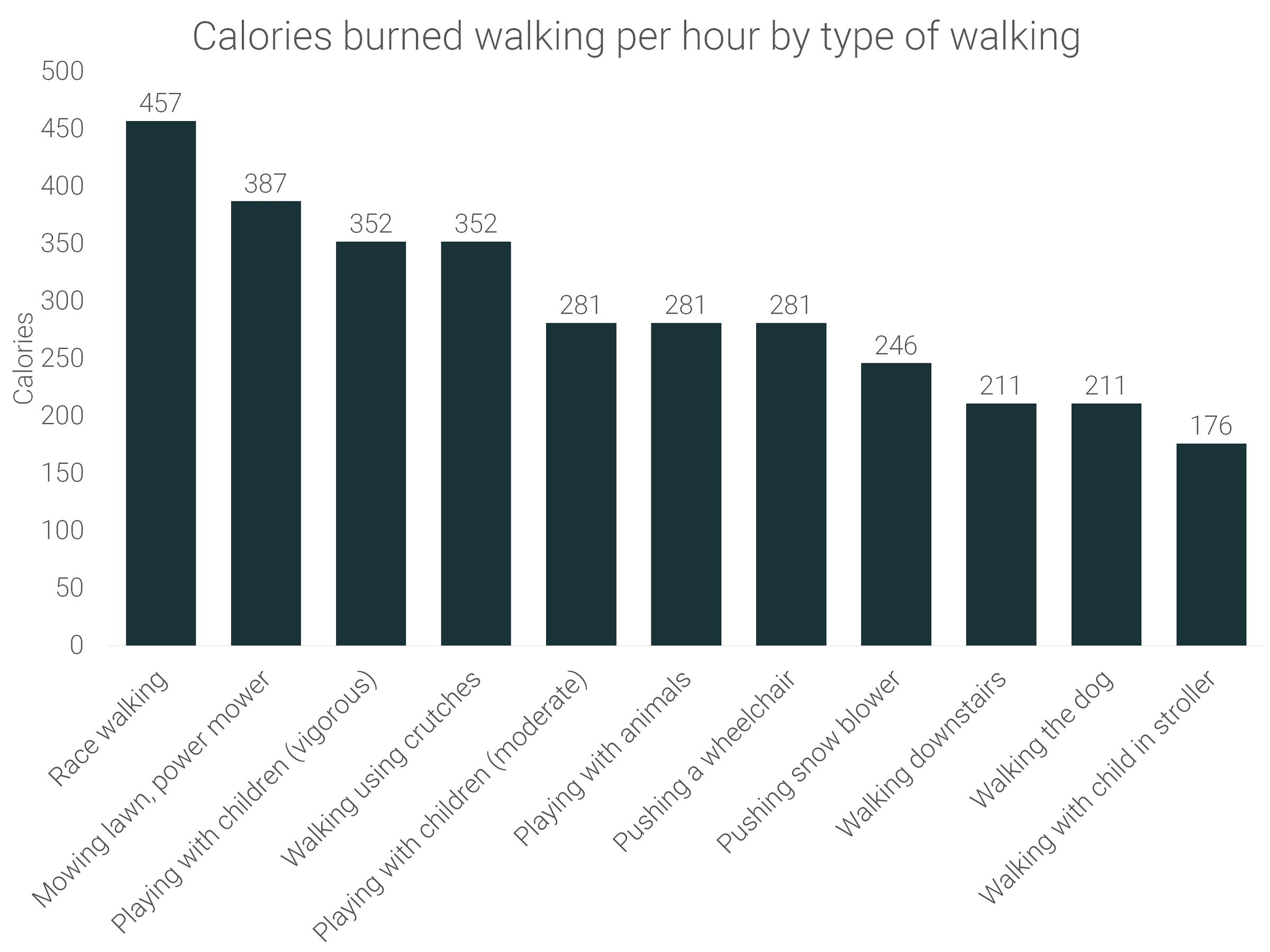
Doing yard work like mowing the lawn burns 18% less calories compared to race walking, but at 387 calories per hour, that’s still more than what you’ll burn by walking a dog.
Having kids also has its upside as playing with children could burn 281 to 352 calories in an hour.
Calories burned walking by weight
In an hour of walking, a 155-lb person burns 211 calories, moving at a pace of 2.5 mph. Burning 19.2% more calories than a person who only weighs 130 lbs.
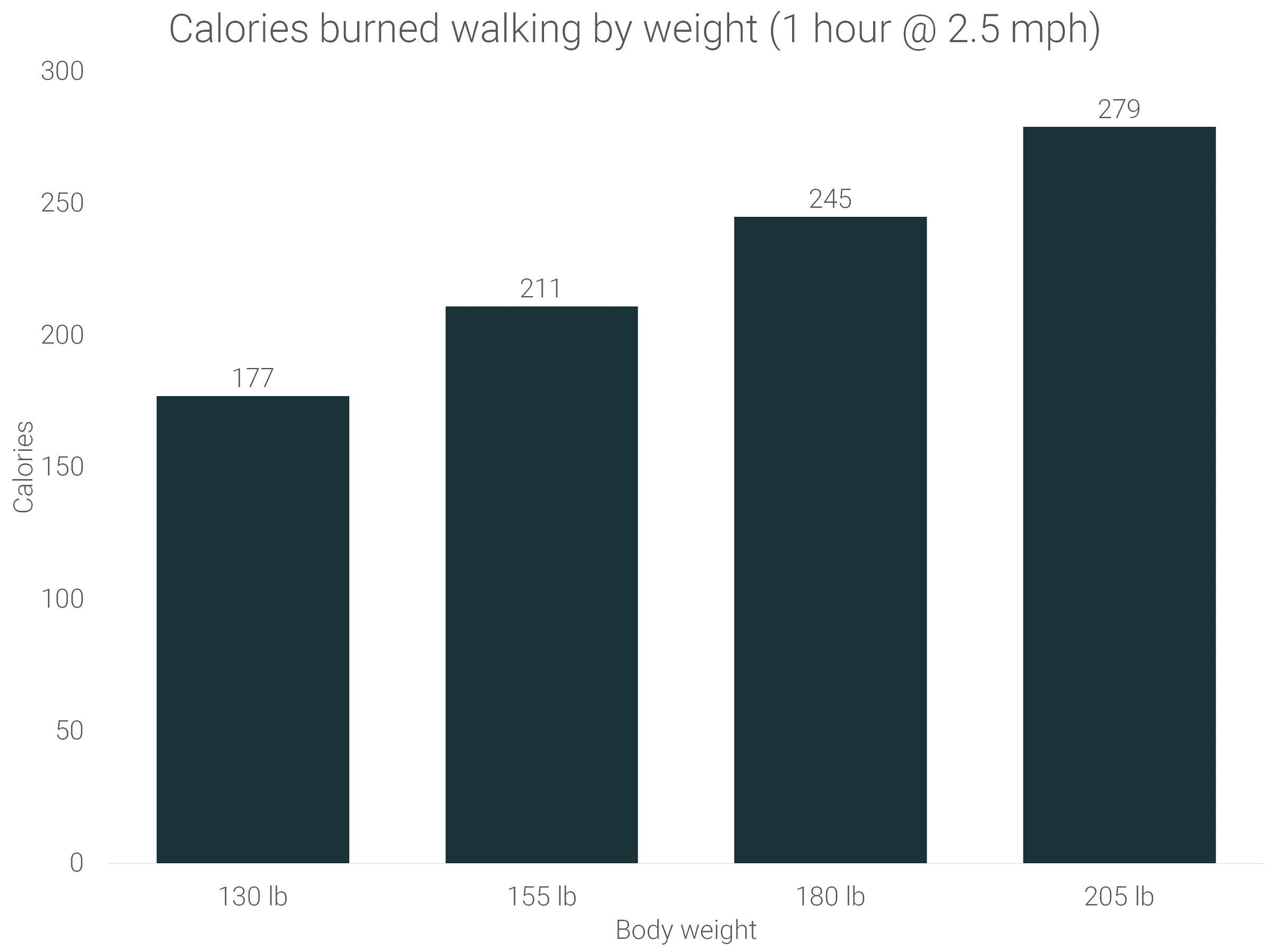
Meanwhile, a person who weighs 205 lbs burns the most calories in an hour, about 279 calories. They burn 32.2% more calories walking at 2.5 mph compared to a 155-lb person.
About RunRepeat
We buy the shoes on our own. We walk/train/run in them. We test them in our lab. Whether you’re looking for walking trainers that are comfortable for all--day-wear or work, you can find them on RunRepeat.
Use of Content
- Did this article pique your interest and want to know more? You can send questions and interview requests to Nick Rizzo at nick@runrepeat.com.
- Data available in this analysis can be used for free for any web coverage of the topic or related content. We only request that you link back to this original source.
